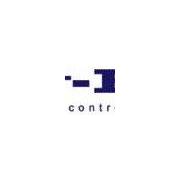Dawlish News
Four-axis pallet-change machine halves cycle times
Control valve and marine steering system components are being machined at least twice as quickly in fewer operations at Hydraulic Projects Ltd (Hy-Pro), Dawlish, on a Brother 4-axis, twin-pallet, vertical machining centre (VMC) supplied by Whitehouse Machine Tools. Installed in July 2007, the machine matches the output of two older
3-axis VMCs which have been sold.
The extra CNC axis on the Brother is used to drive two Microloc workholding fixtures, one on each pallet, onto which up to 16 components are clamped, four per face. On each pallet, the trunnion driving the fixtures are Lehmann high-speed rotary tables mounted at one end and a tailstock with brake at the other.
Said Hy-Pro’s engineering director, John Robberts, “On average we have halved total cycle times across the components that we have transferred to the Brother, without even trying. It is partly a result of reducing the number of set-ups per component and also due to the rapid movement and acceleration of the machine’s linear and rotary axes.
“Contributing further to high productivity is the twin pallet changer, which maximises spindle uptime by allowing the next batch of components to be set up during the previous production cycle. All of these measures have resulted in a 30 per cent reduction in manufacturing cost across the components that we have put on the Brother.”
Established in 1967, Hy-Pro is a 30-employee company specialising in the design and manufacture of mobile hydraulic valves, as well as autopilot steering systems for yachts and boats comprising hydraulic pumps, actuators and cylinders. The steering equipment is largely bespoke, built up from sectional modules to suit a customer’s needs. Only one other UK manufacturer remains, much of the work having migrated overseas.
As always, low price and high quality are paramount to retaining customers, but it is not easily achieved when there are around 1,000 individual machined components in addition to many thousands of bought-in parts such as fixings and seals that form part of the assemblies.
Two thirds of the manufactured components are turned, so Hy-Pro set about streamlining production of these first by installing four twin- spindle lathes with driven tooling, one of which has a sliding-headstock.
The rationale was to reduce the number of times the parts are handled by completing more operations in each set-up, which has the added benefit of improving accuracy.
This left about 300 prismatic components whose production was put under the spotlight next with a view to machining them in fewer operations. Many components, such as manifold blocks and sectional valves, require machining on six faces and need as many as six separate operations including set-ups for drilling angle holes and machining non-orthogonal faces.
Mr Robberts set about finding the most productive machine that would manufacture such components to the required accuracy, which in the case of pump bores entails circular interpolation to five microns total tolerance on dimension and concentricity, although general tolerances are nearer to ± 12 microns.
Fully interpolative 5-axis machining was considered but rejected, as only one part would have come off at a time, whereas Hy-Pro’s is a series production business involving batches of several hundreds, so multiple fixturing was a priority. A 4-axis machine used in 3-axis mode plus rotary positioning about a horizontal axis was identified at the best way to reduce the number of set-ups to generally two.
However, Mr Robberts also wanted twin APC (automatic pallet change) to maximise spindle utilisation; and an electric supply to both pallets to allow the 550 mm long fixture to be rotated not only in the machining area, but also in the outer pallet position to enable convenient clamping of components to all four faces.
Additionally, he specified a rotary hydraulic supply to the pallets to retain the flexibility to automate the fixtures in the future. Only Whitehouse Machine Tools with its Brother TC-32B QT was able to meet this specification, as the electrical and hydraulic supplies are routed through the centre of the pallets rather than via external cabling.
The machine was duly supplied complete with fixtures and programs for two suites of components, plus some advanced extras such as Renishaw’s new cableless twin-probe system that uses an optical interface to capture data from a contact probe for tool setting and broken tool detection, and from a component inspection probe. The latter is particularly useful for in-process measurement of critical machined features on Hy-Pro’s pump bodies, enabling offsets to be fed back automatically to the CNC system and results to be printed out.
Other features that Mr Robberts liked about the Brother machine were the HSK-32 face-and-taper contact tooling (rather than BT-40), 70 bar high-pressure through-spindle coolant used predominantly with Gühring Superline carbide cutting tools, and tool breakage detection in the chain-type magazine to avoid ATC of a faulty cutter (even though it only takes 2.1 seconds).
In addition, 70 m/min linear rapids, cutting feed rate up to 20 m/min and 3.4-second pallet change help to maximise in-cut time. Effective swarf and coolant management copes well with the large amount of aluminium that is machined. The media-free management system employs a back-flushing rotary drum, reducing the need for manual intervention and unnecessary downtime.
In practice, the TC-32B QT has proved highly productive. Operations on most components so far have been reduced to two and some total cycle times are considerably better than half. An aluminium pilot check manifold, for example, is now machined in two set-ups in a total of 4.5 minutes on the Brother whereas it used to take 15 minutes in five operations on 3-axis VMCs. Handling time is saved in addition.
Machining time per pallet can be more than an hour with the multiple fixturing system, although the speed of the machine cuts this to around ten minutes when simpler components are being cut.
Hy-Pro’s progression to minimal set-ups on highly capable, multi-axis machine tools has seen the amount of work subcontracted out fall dramatically. In previous years, overall around 60 per cent of machined parts were put out, which reduced to 20 per cent after reorganisation of the turning shop.
This is expected to fall further when all suitable prismatic parts have been transferred to the Brother, generating additional savings that will amortise the capital investment rapidly.


